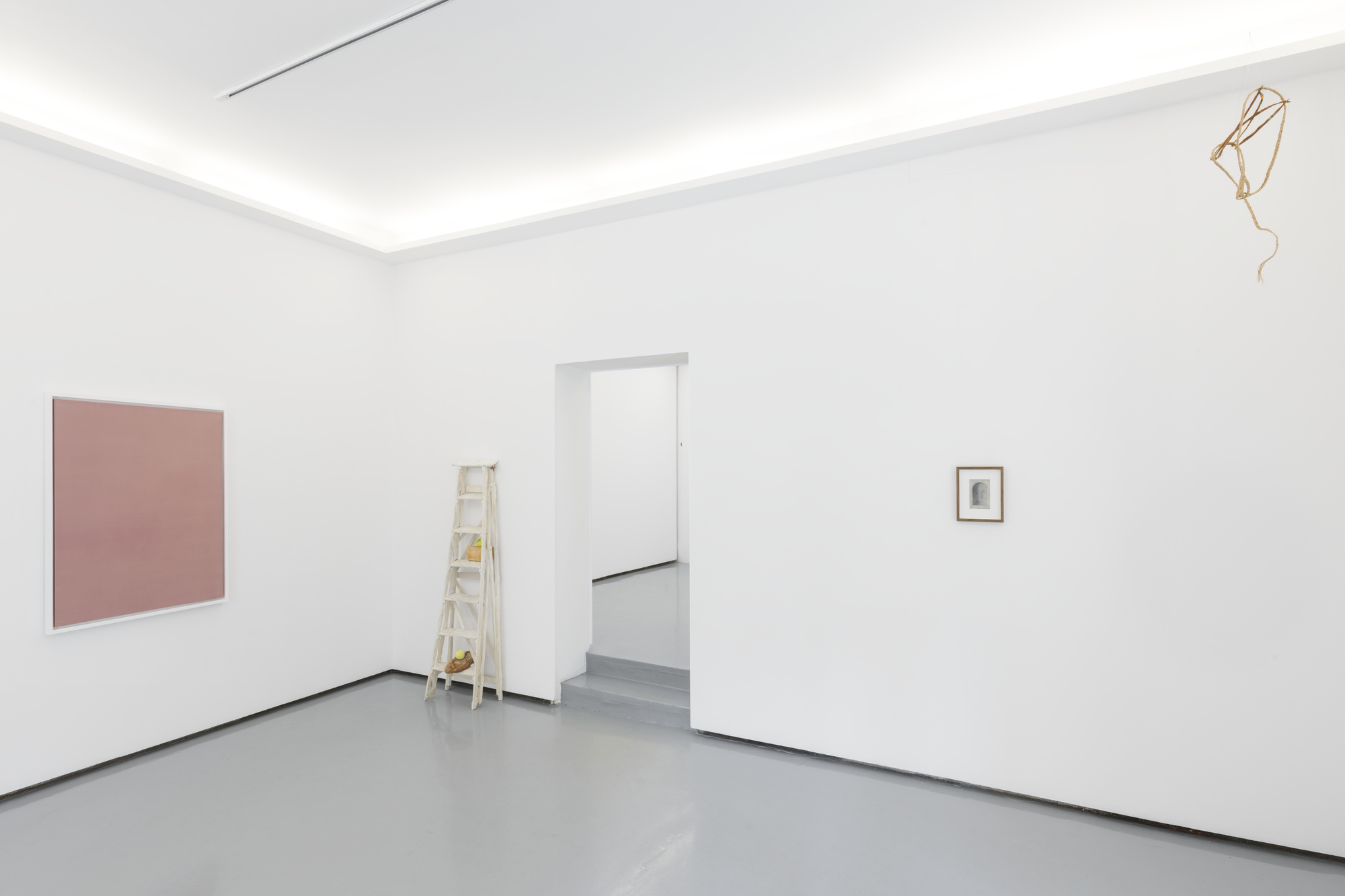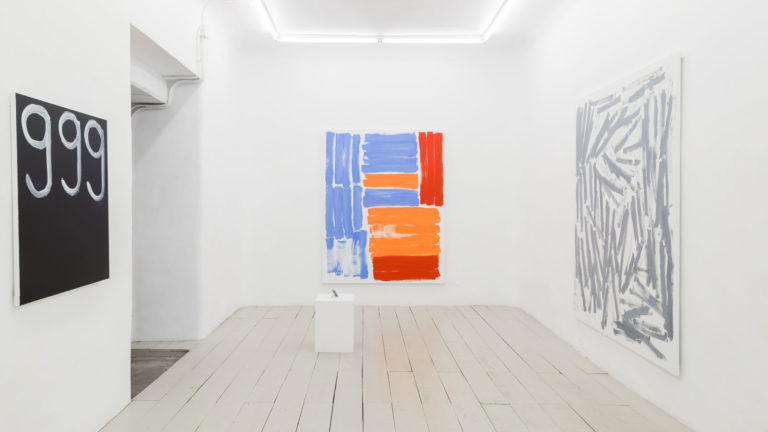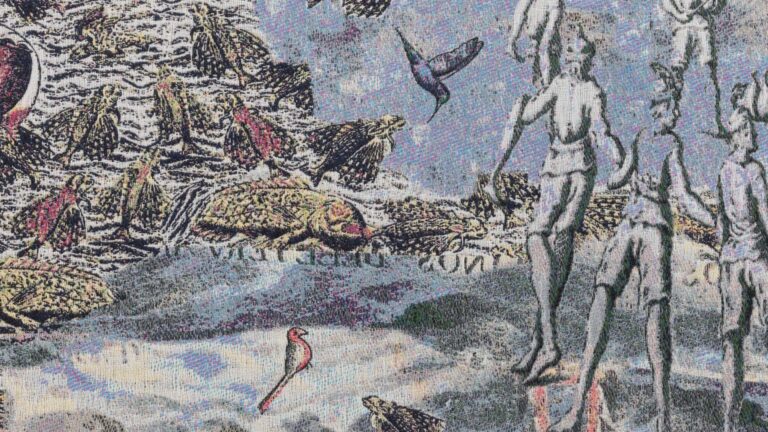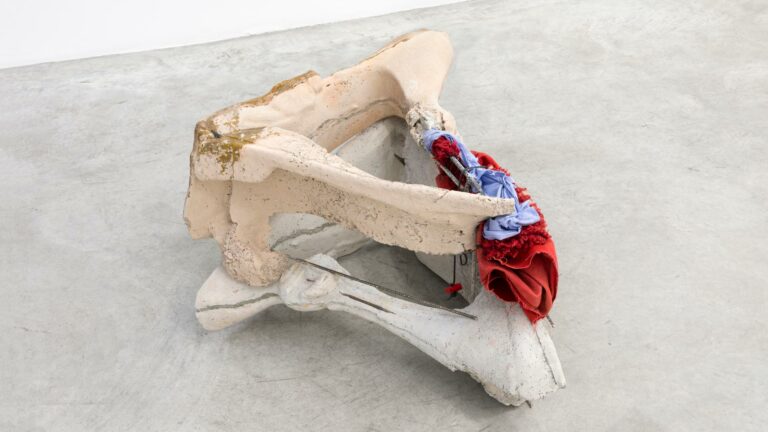Artists: Jacobo Castellano, Fernando García, Christian García Bello
Exhibition title: Ni noble, ni bueno, ni sagrado
Venue: The Goma, Madrid, Spain
Date: June 14 – July 21, 2018
Photography: all images copyright and courtesy of the artists and The Goma, Madrid
“Material was so entangled in the spiritual that it transcended itself, while still being material”
César Aira
The works on show in this exhibition speak to a religious aesthetic that, despite having been watered down in our outwardly secular society, still cuts across many forms of life, through contact with an endless chain of images, objects and beliefs that lie in the half-sleep of the collective unconscious.
Both in their sentient aspect as well as in the possible transcendental meaning they bring into play, we are presenting works conceived for a minor liturgy which literally engage with images, forms and organic components that are difficult to separate from a specific belief system, regardless of whether they share in it or not. In other words, they are symbolic artefacts in spite of themselves, silent, shrouded in a halo of humility, and often miniaturised. They are far removed from any pretensions to monumentality or grandiloquence, given that their distinctly unspectacular scale places them closer to the maxim from popular culture that claims that God is in the details. In short, they fall on the side of the trivial and perhaps a sound use of irony, under the influence of a naturalist impulse and not driven by the majesty which undergirds a large portion of the art produced under the political suppositions of the major religions.
Accordingly, they are removed from the maximalist gestures that are oblivious to the fact that spirituality does not necessarily entail piousness nor indeed a supernatural vision of the incorporeal, but rather an openness to immanence and to affect that grounds us in the world by catalysing contact between bodies and things; at once, they are also removed from an evolutionary vision of the arts, whose teleological narrative celebrates how contemporaneity abandoned wholesale any religious involvement as the twentieth century advanced. The overall group of works presented here deploys strategies such as anachronism, synecdoche or appropriation, evincing a wholehearted passion for material and for life. A deaf celebration, or perhaps a festive mourning for a world always on the brink of the abyss, where dying and death are not the same thing. The sense of a necessary ending that these works endeavour to attenuate explores the dark areas, memories and intuitions we associate with the familiarity of materials like wood, stone or thread, composing a series of allegories teeming with mystery. Through them we propose a walkthrough punctuated with leftovers, returns and evocations of a sensibility which is at once familiar and remote, entangling ancestral rites and myths, thus giving rise to other new, more plastic ones in an iconoclastic exuberance not exempt from a religiosity in conflict with monotheism.
Like children completely engrossed in their toys, artists operate playfully. They abstract signifieds and play with the signifiers, twisting them mercilessly and giving them another form, in a dialogue charged with symbolic violence and paradoxes whose goal is to deterritorialise common places. Nothing is safe from their appetite to profane. Just as there is nothing set aside for the realm of God. And, yet, in their zeal for objects and images, when every profanation entails the possibility of rethinking what the sacred means today and to what extent its coordinates should be changed, one can discern a certain sense of faith in the operations undertaken by their own hands: a faith in the very artistic act and in the field of possibilities it maps out. To consecrate the profane and to desecrate the sacred. In these times of a new pastoral of the market, in order for any object or operation to be able to generate a surplus value, the use value and the exchange value dictated by this logic must be called into question. In other words, to look back on apparently old, fragile, useless or trifling objects and artefacts on the verge of disappearing completely, as a way to ‘recover’ (Debord) the small, the everyday and the less productive. To cast doubts upon the whole system of temporal references that points towards the construction of a present which is measured in terms of eternity, of a future that never arrives, when pleasure and voluptuousness are never far away, dancing around that which is neither noble, nor good, nor sacred.
-Alfredo Aracil
Jacobo Castellano (Jaén, 1976)
Recently he has shown at Centro José Guerrero de Granada, Sobre burlas, juegos y brechas. FACAB, 2017. Currently he is opening riflepistolacañón. Jacobo Castellano curated by Javier Hontoria at Centro Andaluz de Arte Contemporáneo CAAC. Seville. His work has been included in several national and international group exhibitions. More recent ones between 2017 and 2018 include HYBRYS. Una posible aproximación ecoestética. MUSAC. León, ESPANTOSO, ESQUISITO Jacobo Castellano-Noé Sendas. Appleton Square. Lisbon, Ian Anüll – Jacobo Castellano – Zang Kung Kun. Mai 36 Galerie – Showroom. Zurich, Zurich and El paisaje reconfigurado, Centro Botín. Santander, 2018. His work is part of collections such as ARTIUM. Centro-Museo Vasco de Arte Contemporáneo; CAAC. Centro Andaluz de Arte Contemporáneo; CGAC. Centro Gallego de Arte Contemporáneo; Fundación Montenmedio Arte Contemporáneo.
Fernando García (Madrid, 1975)
He has shown individually Fleurs et Escargots at Museo del Romanticismo de Madrid, 2016 and Galería Heinrich Ehrhardt, Vino sobre seda, Madrid, 2017. He is currently preparing INTERIORES at Centro de Arte de Burgos (CAB), 2018. This year he had group shows Bajo el brazo: entre la palma de la mano y la axila, at CaixaForum, Barcelona. In September his work will be included as part of Querer ser noche at CA2M, Móstoles and Centro de Arte de Alcobendas. He was granted with the The Pollock-Krasner Fountation Grant, New York, the Canada Council Scholarship for Arts in 2017 and the Fundación Botín Visual Arts Grant. His work is included in collections such as Centro de Documentación de Ex Teresa Arte Actual (CDXT), México City, Centro de Documentación de Arte y Naturaleza de la Fundación Beulas. Huesca, Spain, Fundación Antonio Pérez, Cuenca, Jyväskylä Art Museum, Finland, Museo Colecciones ICO, Madrid, Obra Social Caja Madrid, UNED among others.
Christian García Bello (A Coruña, 1986)
Recent solo shows include Como tizón quemado, at CGAC, in 2015, curated by Alberto Carton, and Ahora no es pretérito todavía, at Formatocomodo, Madrid 2017. His work has been included in several group exhibitions such as Bajo el brazo: Entre la palma de la mano y la axila, CaixaForum Barcelona, in 2018, and Fugir para lado algum en Maus Habitos, Porto, both curated by Ángel Calvo Ulloa; also Miradas IV at Centro Torrente Ballester curated by David Barro in 2017. His work is part of private and public collections such as DKV or CGAC. He has been granted by INJUVE in 2013 and MAC Fundación Gas Natural Fenosa in 2013 and 2017. The results of this last grant which includes a residency in between Belgium and The Netherlands will be shown next year as part of the show Ascetisch Paysage at the museum
We would like to express our gratitude to galleries F2, Fomatocomodo and Heirich Ehrhardt for their collaboration.
Ni noble, ni bueno, ni sagrado, 2018, exhibition view, The Goma, Madrid
Ni noble, ni bueno, ni sagrado, 2018, exhibition view, The Goma, Madrid
Christian García Bello, Hornacina, 2017, Oil, graphite and wax on paper, 15 x 10,5 cm
Fernando García, Rubia, 2017, Thread, peel and Majorcan sling, 77 x 30 x 30 cm
Ni noble, ni bueno, ni sagrado, 2018, exhibition view, The Goma, Madrid
Fernando García, Vino sobre seda, 2017, Priorat wine on silk, 122 x 95 x 5 cm
Fernando García, Escalera con panes y pelotas de tenis, 2017, Ladder, bread loafs, and tennis balls, 177 x 48 x 27 cm
Ni noble, ni bueno, ni sagrado, 2018, exhibition view, The Goma, Madrid
Jacobo Castellano, Sin título, 2016, Spray, dust and stickers on glass, 32 x 99 cm
Ni noble, ni bueno, ni sagrado, 2018, exhibition view, The Goma, Madrid
Jacobo Castellano, Sin título, 2017, Metal, Variable dimensions
Jacobo Castellano, Sin título, 2017, Metal, Variable dimensions
Ni noble, ni bueno, ni sagrado, 2018, exhibition view, The Goma, Madrid
Christian García Bello, Reunión (Sacrificio), 2017, Graphite and oil on wood, aluminium and steel, 26 x 6 x 6 cm




















